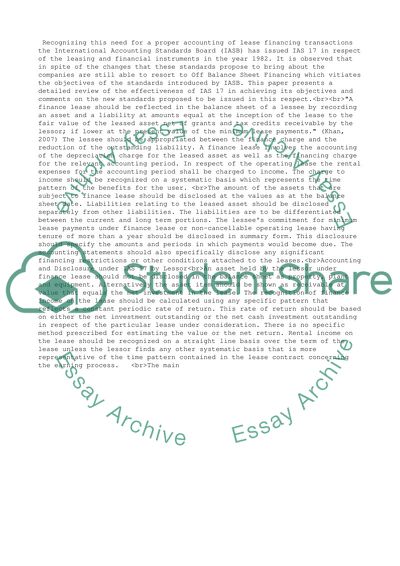Cite this document
(“IAS 17- LEASES Essay Example | Topics and Well Written Essays - 2000 words”, n.d.)
IAS 17- LEASES Essay Example | Topics and Well Written Essays - 2000 words. Retrieved from https://studentshare.org/business/1513800-ias-17-leases
IAS 17- LEASES Essay Example | Topics and Well Written Essays - 2000 words. Retrieved from https://studentshare.org/business/1513800-ias-17-leases
(IAS 17- LEASES Essay Example | Topics and Well Written Essays - 2000 Words)
IAS 17- LEASES Essay Example | Topics and Well Written Essays - 2000 Words. https://studentshare.org/business/1513800-ias-17-leases.
IAS 17- LEASES Essay Example | Topics and Well Written Essays - 2000 Words. https://studentshare.org/business/1513800-ias-17-leases.
“IAS 17- LEASES Essay Example | Topics and Well Written Essays - 2000 Words”, n.d. https://studentshare.org/business/1513800-ias-17-leases.


